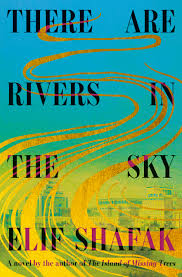H2O
byH2O is more than just a simple combination of hydrogen and oxygen; it is the foundation of life, an element that has shaped civilizations, ecosystems, and the course of human history. This chapter explores the scientific, historical, and symbolic significance of water, highlighting its unique molecular structure and the profound impact it has had on the world. At its core, water is a chemical marvel—a molecule composed of two hydrogen atoms bonded to a single oxygen atom, forming a bent shape that allows it to exhibit properties unlike any other substance. This slight angular arrangement gives water its high surface tension, its ability to dissolve countless substances, and its remarkable capacity to store and transfer heat, making it indispensable to life on Earth. The very fact that water expands when it freezes, unlike most liquids that contract, has ensured the survival of countless species by allowing ice to float and insulate bodies of water from extreme cold.
The chapter delves into the scientific intricacies of water, examining its molecular behavior and how its properties influence biological and environmental systems. The unique hydrogen bonding between water molecules allows it to remain liquid across a broad temperature range, preventing Earth from being a frozen wasteland or an uninhabitable furnace. Water’s ability to absorb and release heat slowly regulates the planet’s climate, maintaining the delicate balance necessary for ecosystems to thrive. In addition, its status as the “universal solvent” means it carries nutrients through plants, enables chemical reactions within cells, and even shapes the very landscapes we inhabit by eroding mountains and carving valleys over millennia. It is the silent architect of nature, responsible for everything from the flow of rivers to the composition of the human body, which is approximately 60% water.
Beyond its physical properties, the chapter also explores the deep cultural and historical significance of water. Ancient civilizations flourished along the banks of great rivers—the Nile, the Tigris and Euphrates, the Indus, and the Yangtze—where water nurtured agriculture, trade, and the rise of complex societies. Mythologies across cultures have revered water as a divine force, from the sacred Ganges in Hinduism to the life-giving floods of the Nile worshiped by the Egyptians. Water has been a symbol of renewal, purification, and transformation, appearing in religious rituals, folklore, and literature as an essential force that connects the spiritual and physical worlds. Even today, water plays a central role in traditions such as baptism, pilgrimage, and sacred healing practices, signifying its enduring power in shaping human beliefs.
The author draws a striking parallel between the three atoms that form a water molecule and the idea of three interconnected elements within human narratives—characters, relationships, and experiences. Just as the bonds between hydrogen and oxygen create something greater than the sum of its parts, so too do the connections between people, places, and emotions form the essence of storytelling. The fluid nature of water is likened to the fluidity of history, memory, and human interaction, emphasizing that life, like water, is constantly in motion, adapting and reshaping itself. The way water cycles through the atmosphere, land, and oceans mirrors the way knowledge, culture, and experiences are passed down through generations, creating an intricate web of continuity.
Water’s omnipresence in both nature and civilization underscores its fundamental importance, yet it remains a fragile resource increasingly threatened by climate change, pollution, and overconsumption. The chapter touches on modern concerns such as rising sea levels, droughts, and the alarming decline of freshwater sources, warning that humanity’s relationship with water is at a critical turning point. From the melting polar ice caps to the contamination of drinking water supplies, the challenges facing this vital element are vast, making conservation efforts more urgent than ever. Water, once thought of as an infinite resource, is now at risk, and the responsibility to protect it falls on every individual and society at large.
Ultimately, H2O is not just a chemical formula—it is the lifeblood of the planet, a force that sustains, shapes, and connects all living things. The chapter concludes by reinforcing the idea that just as water flows endlessly, adapting and reshaping itself to fit its surroundings, so too must we learn to appreciate and safeguard this essential resource. In doing so, we preserve not only the physical world but also the stories, traditions, and legacies that have been carried along its currents for millennia. Water, in all its forms, remains both a scientific wonder and a profound metaphor for life itself, a reminder that the simplest elements often hold the greatest power.

